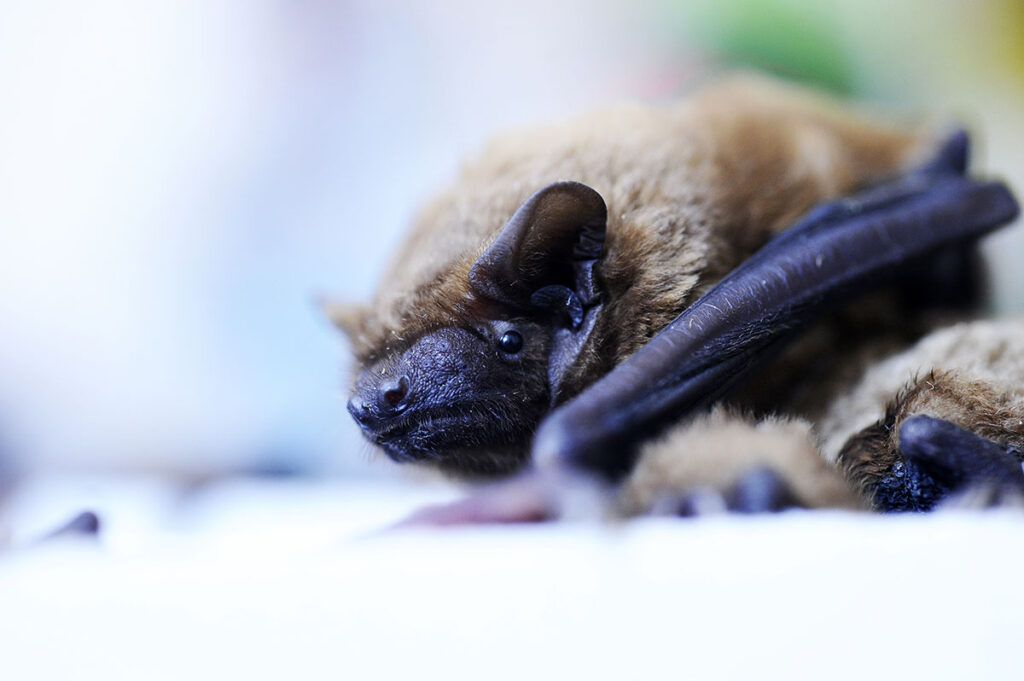With the growing use of bats in infectious disease and ecological research, a new paper published in Applied Biosafety offers a comprehensive framework for managing laboratory biosafety and biosecurity risks during research involving bats and their biological materials. The report brings together contributions from biosafety professionals, veterinarians, ecologists, and public health experts across the U.S., Mexico, and beyond.
This guidance builds upon prior field safety recommendations and addresses the urgent need for standardized practices in laboratory environments—particularly relevant as bat-associated zoonotic viruses remain a persistent global threat.
Strengthening Institutional Oversight and Risk Assessment
The paper emphasizes a multidisciplinary, stepwise approach to biosafety, including required approvals from Institutional Animal Care and Use Committees (IACUCs), Institutional Biosafety Committees (IBCs), and Occupational Health programs. This process ensures that activities involving captive bats or bat-derived samples are reviewed not only for animal welfare but for laboratory safety and pathogen risk mitigation.
Institutions are encouraged to create cross-review mechanisms among IACUCs, IBCs, and safety offices to prevent oversights, especially when research involves transporting bats across borders or working with tissues that may harbor high-consequence pathogens.
Detailed Guidance for Laboratory and Vivarium Practices
The article includes extensive technical recommendations on:
- Bat housing in vivaria, with attention to airflow, lighting, humidity, enrichment, and escape-proof containment.
- Sample transport and storage protocols, particularly for blood, tissues, and guano—highlighting risks from RNA viruses that remain viable under standard freezing conditions.
- Sharps safety and personal protective equipment (PPE), including recommendations to reduce exposure risk during venipuncture or necropsy.
- Zoonotic disease surveillance and quarantine practices, with specific focus on rabies virus, which can remain latent in bats for extended periods despite quarantine.
These practices are contextualized with practical examples, such as restraint devices for safe blood collection and proper disinfection methods for guano-contaminated enclosures.
Attention to Conservation and Ethical Research
Authors highlight that safe bat research must also align with conservation principles. Over 200 bat species are listed as endangered or vulnerable by the International Union for Conservation of Nature (IUCN), and irresponsible sample collection can harm already stressed populations. Ethical review, appropriate permitting, and biobanking of existing samples are recommended to reduce pressure on wild populations and support equitable global research practices.
Zoonotic Disease Threats in Bat Research: Protecting Lab Personnel and Public Health
The study outlines a range of zoonotic pathogens that may be encountered during bat research, underscoring the need for strict biosafety and occupational health protocols. Chief among these are rabies virus (RABV) and related lyssaviruses, which can present with prolonged incubation periods and pose persistent risks even in quarantine settings. Other notable viral pathogens include filoviruses such as Ebola virus, henipaviruses like Nipah virus and Hendra virus, and a variety of bat-associated coronaviruses, including SARS-related strains.
The paper also identifies Bartonella spp., a bacterial genus with zoonotic potential, and parasitic organisms such as Trypanosoma cruzi, the causative agent of Chagas disease. Additionally, fungal and bacterial pathogens—including those capable of persisting in stored samples—require careful handling and risk assessment. These agents can be transmitted through bites, scratches, aerosols, contaminated materials, or insect vectors, reinforcing the need for medical surveillance, pre-exposure vaccination (e.g., for rabies), and comprehensive PPE use for all personnel involved in fieldwork or laboratory studies.
Implications for U.S. and Global Health Security
As the origin of several high-impact viral outbreaks—including SARS-CoV, Nipah, Hendra, and Ebola—bats are an indispensable focus for One Health surveillance. The risk of zoonotic spillover from bat species into human populations underscores the importance of this new guidance not just for lab workers and veterinarians, but for policymakers and the general public.
Robust biosafety protocols help prevent laboratory-acquired infections, maintain the scientific integrity of research, and preserve public trust in biomedical science. Importantly, these guidelines help ensure that laboratories do not become amplifiers of future pandemics—making this issue central to both national security and global health.
“Potential for RABV exposure following a cut, bite, mucous membrane, or other exposure may be a primary concern, but other zoonotic diseases should also be considered and through other routes such as aerosol exposure,” note the authors. “Further, risks should be considered and addressed not just for those directly performing work, but those who may work in the same area, or may be working in support of the research, such as vivarium staff.”
Looking Ahead: A Call for Capacity Building
The authors encourage institutions that are new to bat research to consult experienced biosafety professionals and wildlife specialists before initiating work. They also call for further research into bat-specific vaccines and more extensive training programs to address gaps in field-to-lab transition safety.
By promoting standardized, ethical, and science-based approaches, this paper serves as a blueprint for safer bat research worldwide—especially crucial as global interest in the species as viral reservoirs continue to grow.
Gilman Duane, E., Frank, H.K., Smith, C.A., et al. Field Safety Considerations During Work with Bats: Returning to the Laboratory Environment. Applied Biosafety. 16 June, 2025.


